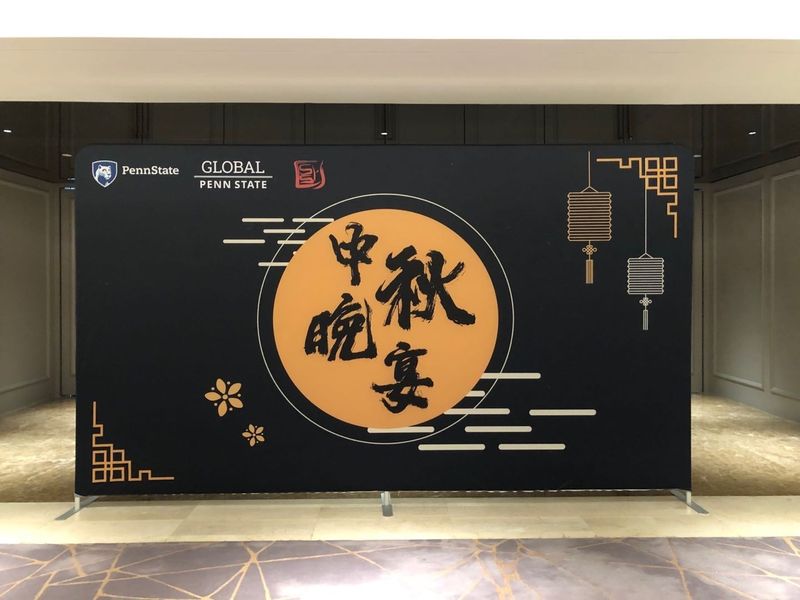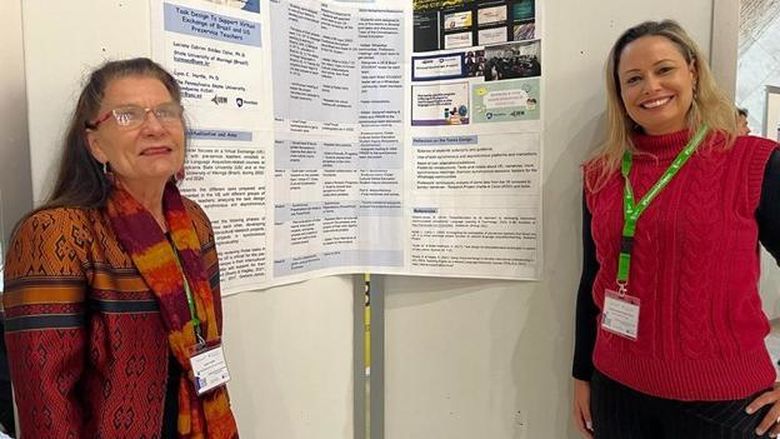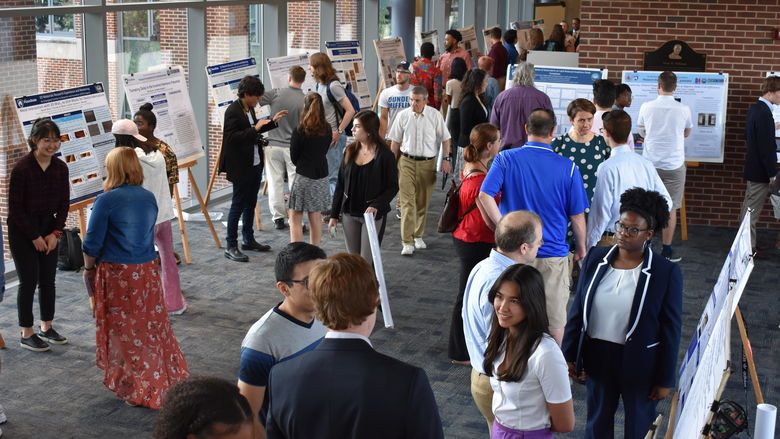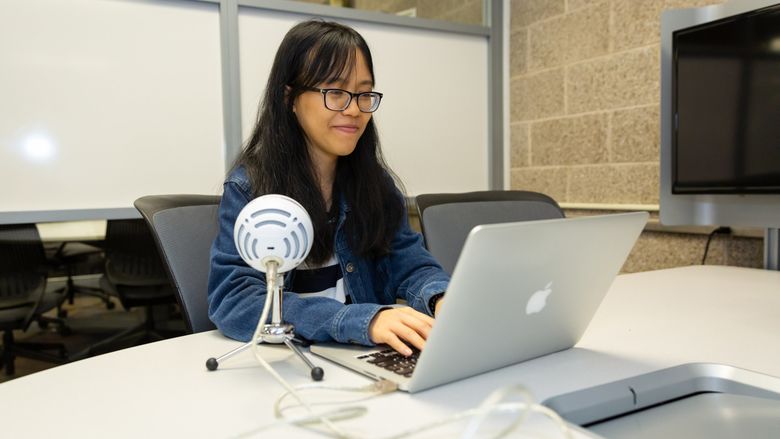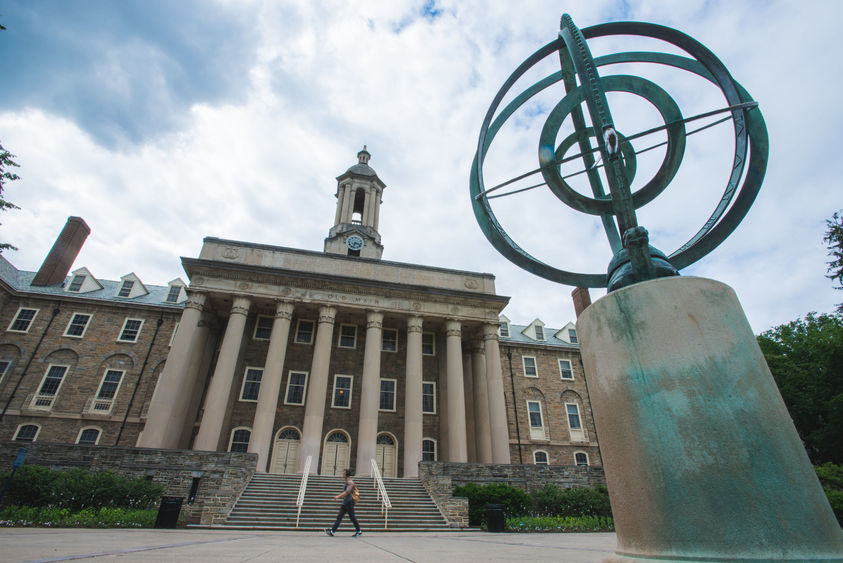
UNIVERSITY PARK, Pa. — When Penn State announced their “Return to State” plans for the fall semester, there were many questions from students. How would the University guarantee safety? What would residential vs remote learning look like?
For international students, the situation was even more complicated. For some, who remained in the United States during the spring semester and throughout the summer, they grappled with the decision to return to campus or stay fully remote. For others, who had returned home since the spring, they did not even have that choice, due to travel restrictions imposed either by their home country or the United States. For new students, it became apparent for many that getting a student visa would be prohibitive.
Penn State’s international student population covers the entire world — quite literally. More than 10,000 international students from 140 countries and six continents attend Penn State each year. Their experience with the new remote learning is unique — and many times challenging.
For some incoming international students, this time gave them an opportunity to explore a new way to begin their Penn State career — a program called Penn State First (PSF), created through a partnership between the Office of Global Programs and Council on International Educational Exchange (CIEE), one of the oldest nonprofit study abroad organizations in the United States. Students in China and Korea have the opportunity to study in residence in their home country while still earning Penn State credit.
These three modes of learning — residential, remote and Penn State First — provide a wide range of experiences for international students.
Residential/hybrid
Noor Syafiqah Ahmad Sanusi, a computer science major at Penn State-Abington, was able to undertake a residential experience this semester. Ahmad Sanusi, an international student from Malaysia, enjoys exploring the area around Abington campus.
“I’ve been exploring the city in a safe way,” she said. “Things like that keep me motivated.”
While most of her classes are online, she has an art lab on campus that meets in-person. Labs are one of the types of courses that need to be done in-person, she says.
“I can’t imagine doing these projects at home,” she added.
So far, she is happy with the safety protocols put in place on campus.
“There are sanitizer stations everywhere, and everyone is wearing masks,” she said. “My instructor in the lab class made us wipe down our workstations at the beginning and end of class. Also, instead of showing us individually how to do a certain technique, he recorded a video and played it at the front of class to ensure social distancing.”
For Libby Kwon, a finance major in the Smeal College of Business at University Park, practicing safety is about caring for others.
“I believe the protocols are there to not only protect ourselves, but others who may be at more risk,” she said. “I believe wearing my mask and practicing social distancing is a way to show others that I care about them, which is why I choose to follow the rules.”
For both students, the residential experience has been different than in the past.
“I do miss more options for dining,” Kwon said.
“Sometimes I feel demotivated [by all of the online classes],” said Ahmad Sanusi. “But then I take a walk around campus or exercise and find my motivation again.”
Remote
Most international students are taking classes remotely this semester. This leads to some interesting situations.
“I’m sort of a night owl now,” said Erica Song, an Earth sciences major at Penn State Abington. Song is currently located in China, and due to the time difference between the eastern United States and China, Erica routinely has to be up in the middle of the night — around 2 or 3 a.m. local time — to attend synchronous classes.
“It kind of works for me, though,” she said.
The classes themselves, however, seem to be going well, and not just for Erica. Kaiming Cui, a sophomore in the College of Engineering, says that flexibility has been key.
“My professors pre-recorded all of the lectures before the semester, but also still hold live Zoom sessions,” he said. “Now that I spend most of my time in my house, I find that I have more spare time due to not needing to travel.”
He also pointed out some useful things his professors have done.
“One of my professors uploaded all of the lectures to a YouTube playlist, which makes it much easier to watch them than on Canvas,” he said.
In Kaiming’s Japanese class, though, students attend synchronously and generally have their cameras on.
“It is quite a pressure for Japanese beginners, but the feeling of connection is just amazing,” he said. “We meet and speak to each other every day and I like it.”
Song also likes feeling connected with her classmates.
“My professors put us into breakout rooms where we meet new people. It’s nice,” she said.
For others, though, the feeling of connection is a struggle. Kennesha Busby, a senior at Penn State Brandywine studying vertebrate physiology, feels this way.
“It is hard to connect with classmates during online learning because most times everyone keeps their cameras off and many times students don’t talk much,” she said. “It is a lot easier to connect with classmates in person.”
“I haven’t been able to make many new friends this semester,” said Kwon. “I do have friends in most of my classes though. And I’ve been able to connect with some classmates through breakout rooms.”
Despite the struggles, the feeling from the students who were interviewed for this story is that, while remote learning is not their preferred method, they still find it valuable.
“I think the experience of the spring prepared us for this,” said Busby. “That was way worse.”
Penn State First
While most international students chose one of the two options above, for a specific subset of students — those living in China or Korea — there was a third option available.
“Since we knew that some new students wouldn’t be able to make it to the U.S. because of visa restrictions, we started thinking, ‘What would it look like to offer students a residential experience in their own country?’” said Brian Brubaker, director of education abroad in the Office of Global Programs. “So we began to talk to our partners.”
One of Penn State’s partners — CIEE, or the Council on International Educational Exchange — had already been thinking along these lines. Penn State and CIEE have been working together for over 30 years, so the partnership was already well-established.
CIEE has centers and staff in multiple countries. So, Brubaker’s team worked closely with them to identify possible areas of interest. At the end of the process, when all was said and done, strong interest was identified in two places: Shanghai, China, and Seoul, Korea. Now, there are over 400 students studying in Shanghai and almost 40 studying in Seoul.
Students in Shanghai attend classes at East China Normal University, whereas students in Seoul attend Yongsei University, one of the top universities in Korea. Students take a combination of on-campus, asynchronous online, and synchronous online classes; some even register for direct Penn State classes as well.
“So far, my professors, TAs, and RAs are very helpful in answering all of my questions, from coursework to life in Shanghai."
-- Donglong Liu, a Penn State First student.
Many established Penn State students from the Chinese Students and Scholars Association have taken leadership roles as RAs or Orientation Leaders at the Penn State First program. Recently, two of them – Ang Chen and Yufan Wang - were elevated to Student Program Coordinators.
“I couldn’t be more proud of how much these students have risen to the challenge,” said Anna Marshall, program manager of Penn State First Program. Marshall works closely with the Chinese student organizations at Penn State and took a leadership role in establishing the programs at Penn State First.
Students appreciated the opportunity to experience a taste of American university life before coming to the United States. Penn State First ran an official orientation, which exposed students to the culture of the University. In addition, three alumni from the PSU Shanghai Alumni Chapter, Haowei Zhang (the president of Shanghai Alumni Chapter), Peipei Chen, and Moly Gu, visited students during their orientation on Aug. 23. The Shanghai Alumni Chapter will continue connecting with PSF freshmen in Shanghai by inviting students to visit their firms during Fall 2020.
“I am grateful to have the university experience at PSF in Shanghai. I am very appreciative to Penn State for offering this opportunity in China,” said Yi Li, another PSF student. “It is wonderful to learn a new environment and meet new students here.”
“I am curious about college life, so I am delighted that PSU offers this opportunity in my country for me to study here,” said Xujia Liu. “I can also get familiar with US college environment while learning new things and embracing different experiences in Shanghai.”
They are all looking forward to stepping foot on a Penn State campus for the first time — whenever that may be.
“I am so looking forward to joining PSU’s American campus,” said Li.
Next challenges
As the University plans for the spring semester, international students will face many more hurdles and tough decisions. Some may be able to set foot on a Penn State campus for the first time, depending on the course of the pandemic; others may need to continue to study remotely until the coronavirus pandemic is under control. Follow virusinfo.psu.edu for the latest updates.
